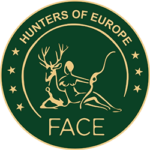To monitor the distribution and populations of German wildlife species to derive strategies for the conservation and sustainable use of wild animals. Hunters are asked to fill in a survey detailing what species they encountered and where. This data is then compiled, analysed and used to map species distribution and monitor their popuation trends. The project was voluntarily undertaken by Deutscher Jagdverband and hunters voluntarily submit their data to the system.
Country: Germany
Starting date: 2002
Species: European Hare (Lepus Europaeus), European Rabbit (Oryctolagus Cuniculus), Common Pheasant (Phasianus Colchicus), Raccoon Dog (Nyctereutes Procyonoides), Raccoon (Procyon Lotor), American Mink (Neovison Vison), European Polecat (Mustela Putorius), Eurasian Woodock (Scolopax Rusticola), Grey Partridge (Perdix Perdix), Common Raven (Corvus Corax), Wildcat (Felis Sylvestris), Eurasian Beaver (Castor Fiber), Beech Marten (Martes Foina), European Pine Marten (Martes Martes), Mute Swan (Cygnus Olor), Eurasian Coot (Fulica Atra), Elk (Alces Alces), Grey Wolf (Canis Lupus), Harbor Seal (Phoca Vitulina), Red Fox (Vulpes Vulpes), European Badger (Meles Meles), Wild Boar (Sus Scrofa), Roe Deer (Capreolus Capreolus), Greylag Goose (Anser Anser), Canadian Goose (Branta Canadensis), Egyptian Goose (Alopochen Aegyptiaca), Mallard (Anas Platyrhynchos), Common Wood Pigeon (Columba Palumbus), Barnacle Goose (Branta Leucopsis), Ruddy Shelduck (Tadorna Ferruginea)
Species characteristics: Huntable species, Protected species, Threatened species, Abundant species, Migatory species, Invasive Alien species
Type of actions: Research and data collection, Policy work
Leading partners: Deutscher Jagdverband - http://www.jagdverband.de/startseite

